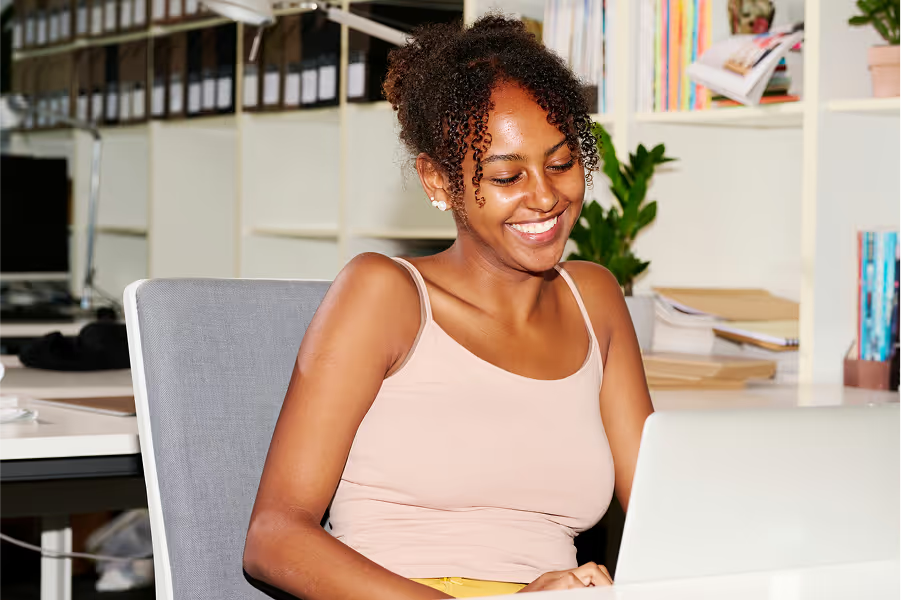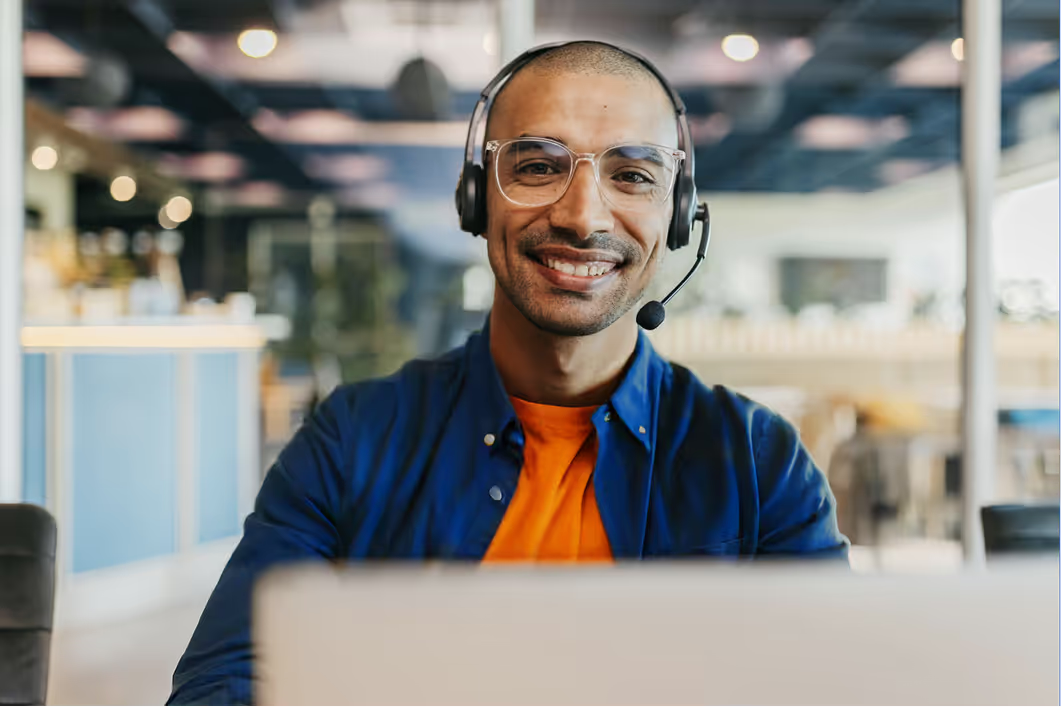12 fun employee engagement activities to boost morale

Discover Workleap Officevibe's benchmark report on 12 key employee engagement metrics

When work starts feeling repetitive, fun employee engagement activities are the refresh button your team needs.
They spark creativity, build stronger communication, and help people tackle challenges with genuine enthusiasm. Without them, teams can quickly lose motivation, feel disconnected, or see their work as just another task on the list.
To help you reignite that sense of energy and connection, we’ve rounded up 12 simple, high-impact activities you can start using right away. Each one is designed to boost morale, strengthen collaboration, and create a workplace culture people actually enjoy being part of.
Engagement activities for work: What they are and why they matter
Employee engagement activities are programs, events, or initiatives designed to help people feel more connected to their workplace. They’re fun opportunities for colleagues to get to know each other better and see their work as more than just a means to a paycheck.
According to Gallup, only 32% of employees are engaged in their work — a worrying statistic given the clear link between engagement and retention. When people aren’t engaged, their satisfaction drops, motivation fades, and they start looking for opportunities elsewhere.
Employee engagement activities are designed to combat this by improving the workplace experience. The right activities strengthen team bonds, boost motivation, improve communication, and increase productivity. They build a bridge between employees and their work, their teams, and the organization’s objectives and purpose.
12 ideas for staff engagement activities
You don’t have to spend thousands of dollars on fun employee engagement activities to make an impact. Even small initiatives will help your teams feel more energized, connected, and inspired.
We’ve handpicked a few examples of employee engagement activities that will spark creativity, enhance employee wellness, foster growth, and strengthen team bonds.
1. War of the jars
Inspired by creative cafe tip jars, this activity combines charity with team bonding. Label two jars with pop-culture rivalries, like the Joker versus Batman or Nike versus Adidas. Employees vote for their favorites by placing dollar bills in their preferred jar. Count the money at the end of the week, announce the winner, and donate the proceeds to a charity. Employees get to share their out-of-work interests while feeling like the company is doing some good.
2. Office innovation sprint
Break employees up into several teams and give them one to two hours to solve a real-world workplace challenge, like crafting a new onboarding process or designing a new creative workspace. Teams present their ideas at the end, and the best solution receives a small prize or employee recognition. The idea is to foster collaboration and creativity while building goal-setting and prioritizing skills.
3. Mindful minutes
Encouraging employees to step away from their desks and take a break can help reset their focus. Set aside 5–10 minutes each week for guided mindfulness or breathing exercises. You can bring in an outside professional or let a volunteer team member lead the session. Apps and videos can also help guide mindful activities.
4. Healthy recipe swap
Invite employees to share quick, nutritious recipes on a Slack channel, bulletin board, or email thread. Encourage people to try new dishes from different international cuisines, and use a rating system to let workers vote for their favorite dishes. To make this activity more interactive, try hosting a tasting session where employees bring in dishes they’ve prepared for colleagues to share.
5. Museum of failures
This activity helps employees feel better about small mistakes. Create a bulletin board, online gallery, or Slack channel for employees to share pictures or stories of funny mishaps, like funny typos, email misfires, or burnt toast in the office kitchen. Accepting these mistakes transforms embarrassing moments into an opportunity for accountability, growth, emotional connection, and humor. And if your managers get involved, your people will see their leaders as human, which makes them more approachable.
6. Employee feedback hubs
Gathering feedback through pulse or engagement surveys gives managers the opportunity to respond to employee questions and concerns. When their feedback results in positive action, workers feel heard and valued by the company, boosting employee engagement while building trust and fostering improved communication. With Workleap Officevibe, you can highlight employee contributions, respond to feedback, and celebrate wins quickly, all from one central platform.
7. Peer shoutout wall
Set up a physical or digital wall where employees can leave sticky notes or posts recognizing their colleagues’ efforts. Encourage workers to interact with it whenever they want to shout out an accomplishment, no matter how small. Highlighting a “shoutout of the week” keeps achievements front-of-mind while helping workers continually strive for success.
8. Trivia throwdown
Host a weekly or monthly trivia competition to help employees relax and bond away from the pressures of work. Mix general knowledge, pop culture, and company-specific questions to give everyone a chance to succeed. Let employees compete solo or form teams, and offer top performers the opportunity to earn small prizes to boost participation.
9. Lunch-and-learn series
Hosting short, interactive sessions on industry trends, productivity tips, or personal growth topics boosts learning and development. It can also help employees better understand the company and the kinds of work their colleagues do. Encourage questions to keep sessions engaging, and consider serving lunch to make the experience more relaxed and social.
10. Volunteer day challenges
Partnering with a local charity or nonprofit offers team members a chance to bond while giving back to their community. This might be assembling a care package or an out-of-office event like planting a community garden.
11. Themed lunch meetups
Sharing a meal is a great way to start conversations, break the 9-to-5 routine, and build team chemistry. Pick a theme, such as international cuisine, childhood favorites, or favorite movies, and invite employees to contribute. They could bring along themed dishes, dress up for the occasion, or share snacks from around the world.
12. Skill swap sessions
It's easy for people to feel disconnected from individuals on other teams. Pairing employees from different departments for a skill-swap workshop will help them get to know each other better while allowing them to gain new skills, develop new interests, and contribute to a more rounded workforce. Examples include a designer teaching someone from finance how to use Photoshop or a content writer helping a salesperson write something for the company blog.
Health and wellness initiative ideas to try
Workplace health and wellness initiatives are employee engagement activities focused on workers’ physical, mental, and emotional well-being.
According to Gallup, adult mental health and emotional well-being are currently at an all-time low. This can bleed into the workplace, harming stress, productivity, and motivation levels. Gallup’s research also shows that, while workplace wellness programs are on the rise, only 32% of employees find these programs “extremely helpful.”
Health and wellness activities should provide the tools to manage stress while keeping performance and motivation levels high. Providing these sessions also lets people know that leaders care about their well-being outside of work. Gallup advises companies to consider these five initiatives when designing their wellness programs:
- Physical wellness
- Mental health support
- Preventive health programs
- Health education
- Work-life balance
We’ve put together four additional engagement activities focused on employee health and wellness for you to consider.
1. Digital detox periods
Designating regular times for employees to focus on deep work and creative thinking reduces digital overload. This means limiting or avoiding emails, Slack messages, and meetings. A digital detox provides people with space to think without interruption.
If you have an in-person or hybrid office, you can also designate a “no digital” area, where employees can put their heads down and show others they’re in focus mode.
2. Habit pairing
Ask employees to tie a small wellness habit to something they already do daily, like a deep breathing exercise after their morning coffee, a 10-minute walk after lunch, a short stretch at their desk, or journaling at the end of the day.
Coupling a small wellness habit with a regular activity removes the need to remember a new task. It also makes habits feel more achievable, so employees are more likely to stick with them.
3. Financial wellness programs
Financial concerns can be anxiety-inducing, and this background stress often impacts performance at work. Workshops on budgeting, debt management, and retirement planning help empower employees to combat these concerns. Companies can also provide access to financial counseling or tools for tracking personal financial health.
4. Commuting or transportation initiatives
For in-office workers, getting to and from work can be expensive. Employees worried about the cost of fuel or public transport are likely to arrive stressed out, which may distract them from their work. But when commuting is easy, workers arrive ready to face the day.
Reduce transportation anxiety by offering subsidized public transit passes, ride-share or carpool matching, secure bike storage and showers, or incentives for walking and biking.
Boost morale today with Workleap
You can build a culture of trust at work by combining activities to engage employees with feedback loops and employee recognition programs. Workleap Officevibe helps you focus on all of these initiatives in one simple-to-use platform.
Use pulse surveys, anonymous feedback, 1-on-1 meeting tools, and engagement metrics to understand how team members really feel, and strengthen connections through ongoing support. And with Workleap’s Good Vibes recognition tool, you can celebrate wins both publicly and privately with employee recognition cards or the platform’s praise wall. Together, these features help HR leaders build motivated, connected teams
FAQs
How often should I organize corporate engagement activities?
Try to organize employee engagement activities at least once a month to maintain momentum, build trust, and keep morale high. You can also use larger quarterly events to supplement smaller weekly or monthly activities.
Can virtual engagement activities be as effective as in-person ones?
Yes, virtual engagement and team-building activities can be just as effective if they’re interactive, inclusive, and facilitate remote collaboration. Online games, pulse surveys, and employee recognition platforms can help remote team members stay connected and motivated.
How do I measure the success of employee engagement strategies?
Pulse surveys, participation rates, and employee feedback can help you measure key HR metrics like employee retention, absenteeism, and productivity. Tracking these indicators over time reveals whether engagement strategies are improving morale and performance.
Give HR and managers the clarity, confidence, and connection to lead better every day.


%20(1).avif)


.avif)
.avif)








